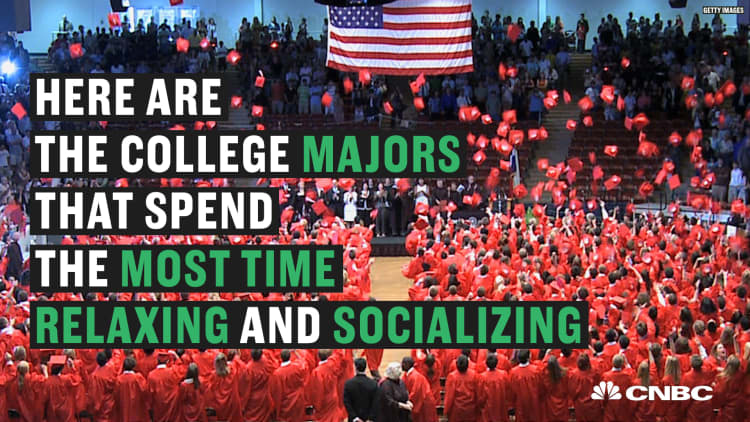Attending college is a major investment, and it's essential that students factor how much they expect to earn upon graduation into the decision about which school to attend.
Job site PayScale collected information from 2.3 million Americans with bachelor's degrees from 2,441 institutions and found that graduates with highest median salaries often attended small colleges with strong engineering programs.
Read on to see PayScale's list of the 10 schools with the alumni with the highest median income:
10. Stanford University
Early career pay: $73,300
Mid-career pay: $140,400
Percentage of STEM majors: 49 percent
9. Harvard University
Early career pay: $69,200
Mid-career pay: $140,700
Percentage of STEM majors: 19 percent
8. Babson College
Early career pay: $66,600
Mid-career pay: $141,700
Percentage of STEM majors: 0 percent
7. California Institute of Technology
Early career pay: $78,800
Mid-career pay: $142,500
Percentage of STEM majors: 97 percent
6. United States Naval Academy
Early career pay: $75,000
Mid-career pay: $143,800
Percentage of STEM majors: 60 percent
5. United States Military Academy
Early career pay: $75,100
Mid-career pay: $144,300
Percentage of STEM majors: 43 percent
4. SUNY Maritime College
Early career pay: $71,600
Mid-career pay: $145,100
Percentage of STEM majors: 35 percent
3. Massachusetts Institute of Technology
Early career pay: $81,500
Mid-career pay: $147,000
Percentage of STEM majors: 69 percent
2. Princeton University
Early career pay: $69,800
Mid-career pay: $147,800
Percentage of STEM majors: 47 percent
1. Harvey Mudd College
Early career pay: $81,000
Mid-career pay: $155,800
Percentage of STEM majors: 85 percent
Analysis
It's important to note that these wealthy alumni do not accurately represent the socioeconomic, racial and gender distribution of the U.S. population. Many of the schools with high-earning alumni enroll a disproportionate number of men. Given that women on average earn just 83 percent of what men earn, it makes sense that schools with high percentages of male students have high-earning alumni.
Fourth on the list is SUNY Maritime College, whose student body is 90 percent male. Fifth on the list is the United States Military Academy, which enrolls 81 percent men.
And it's not just schools affiliated with the armed forces that have both high percentages of male students and high-earning alumni. Harvey Mudd, Massachusetts Institute of Technology and California Institute of Technology all enroll more men than women.
People of color also face a stubborn wage gap and are underrepresented at many of these schools. The New York Times recently highlighted that while black students make up 15 percent of college-age Americans, they only make up 6 percent of the incoming freshmen class across top colleges such as Harvard and MIT.
Black men and women make 73 and 65 percent, respectively, of what white men make. Given that these top schools graduate a high percentage of white students, their alumni are already more likely to earn more after graduating.

Lack of socioeconomic diversity is also a potential cause for this phenomenon. While institutions such as the Naval Academy and the Military Academy are free to attend, other schools such as Babson College charge steep tuition, leading to a disproportionately wealthy student body.
According to the National Center for Education Statistics, 90 percent of students at private 4-year colleges are awarded aid. At Babson College, however, just 44 percent receive aid. If your family is able to afford to pay $68,428 a year for you to attend Babson, the odds are already stacked in your favor.
Other research has been conducted that highlights schools that do a terrific job of creating mobility for students. Stanford professor Raj Chetty and Harvard economist Nathaniel Hendren found that mid-tier public schools were actually the best at helping move students from the bottom fifth of income distribution to the top fifth.
Like this story? Like CNBC Make It on Facebook
Don't miss: The 10 schools where students study the least



